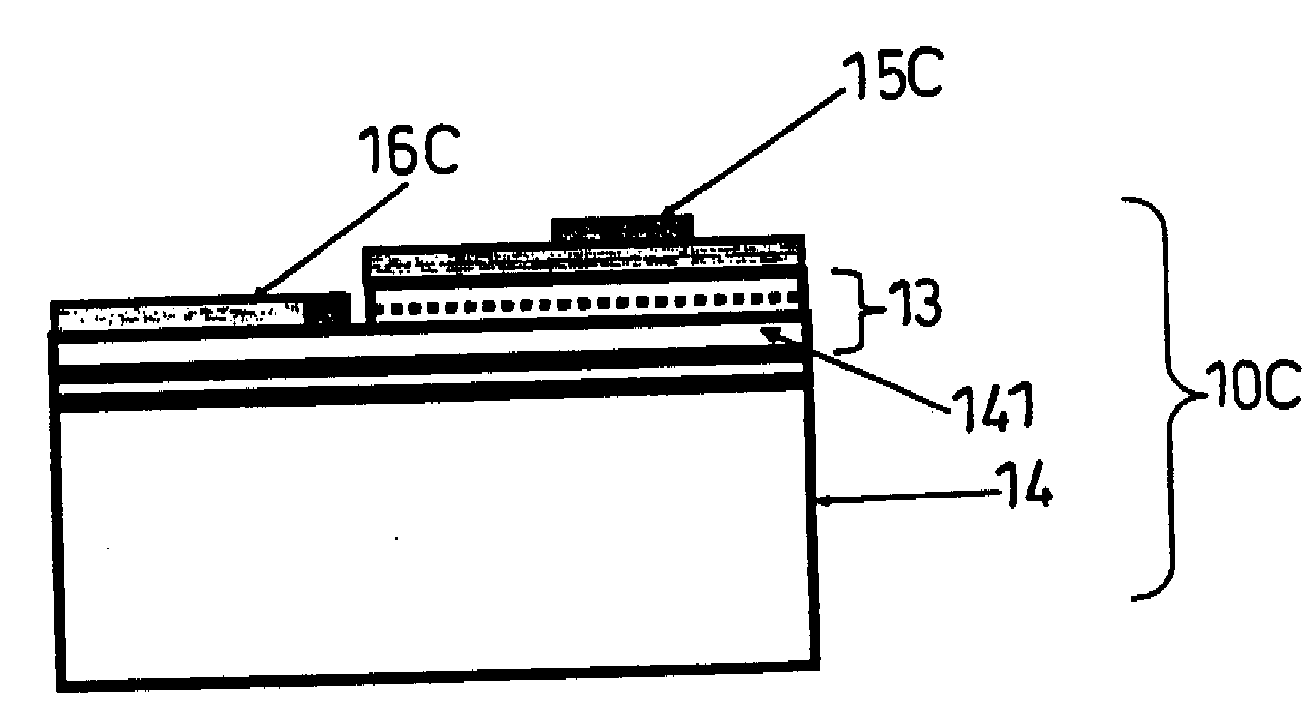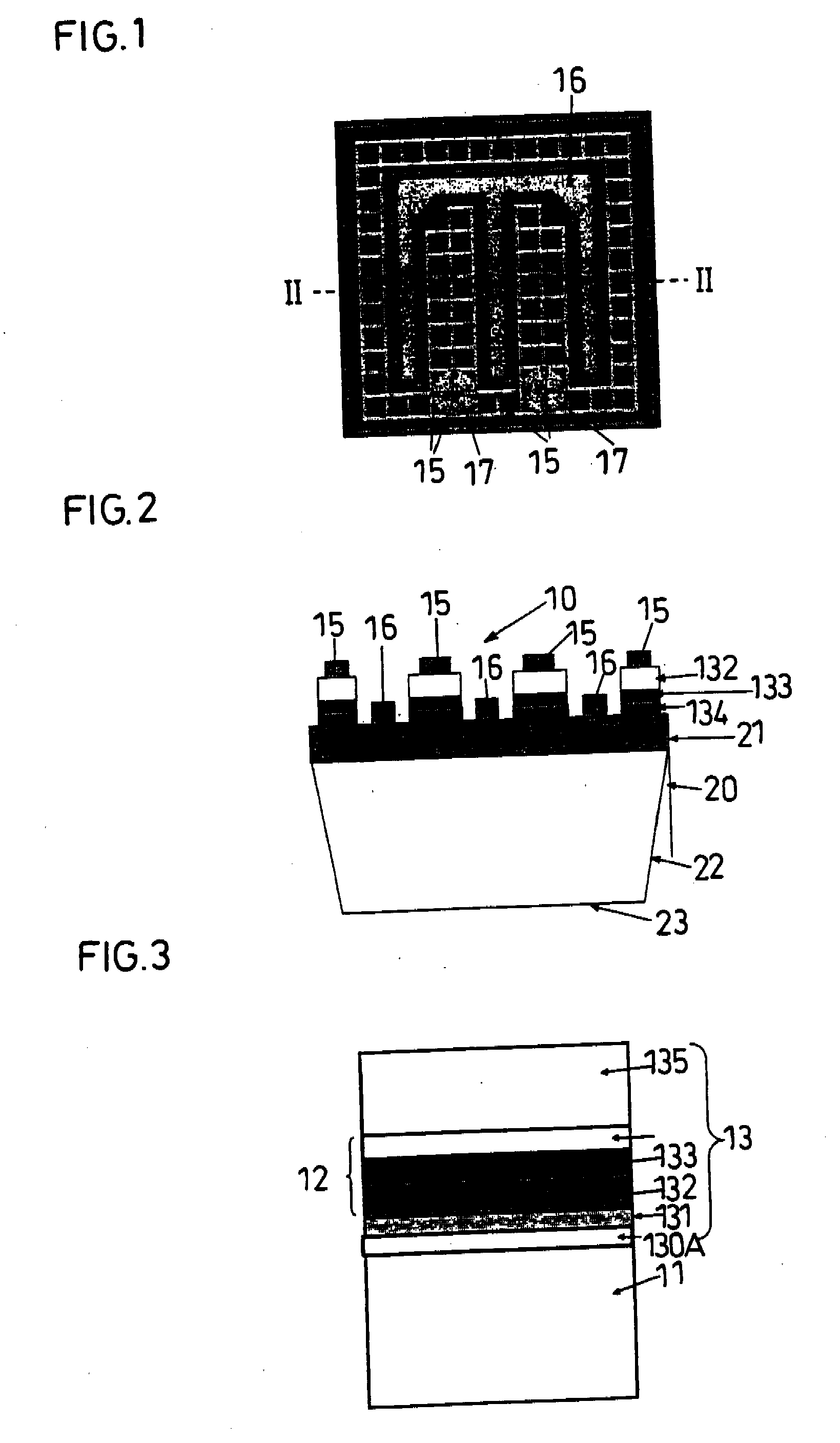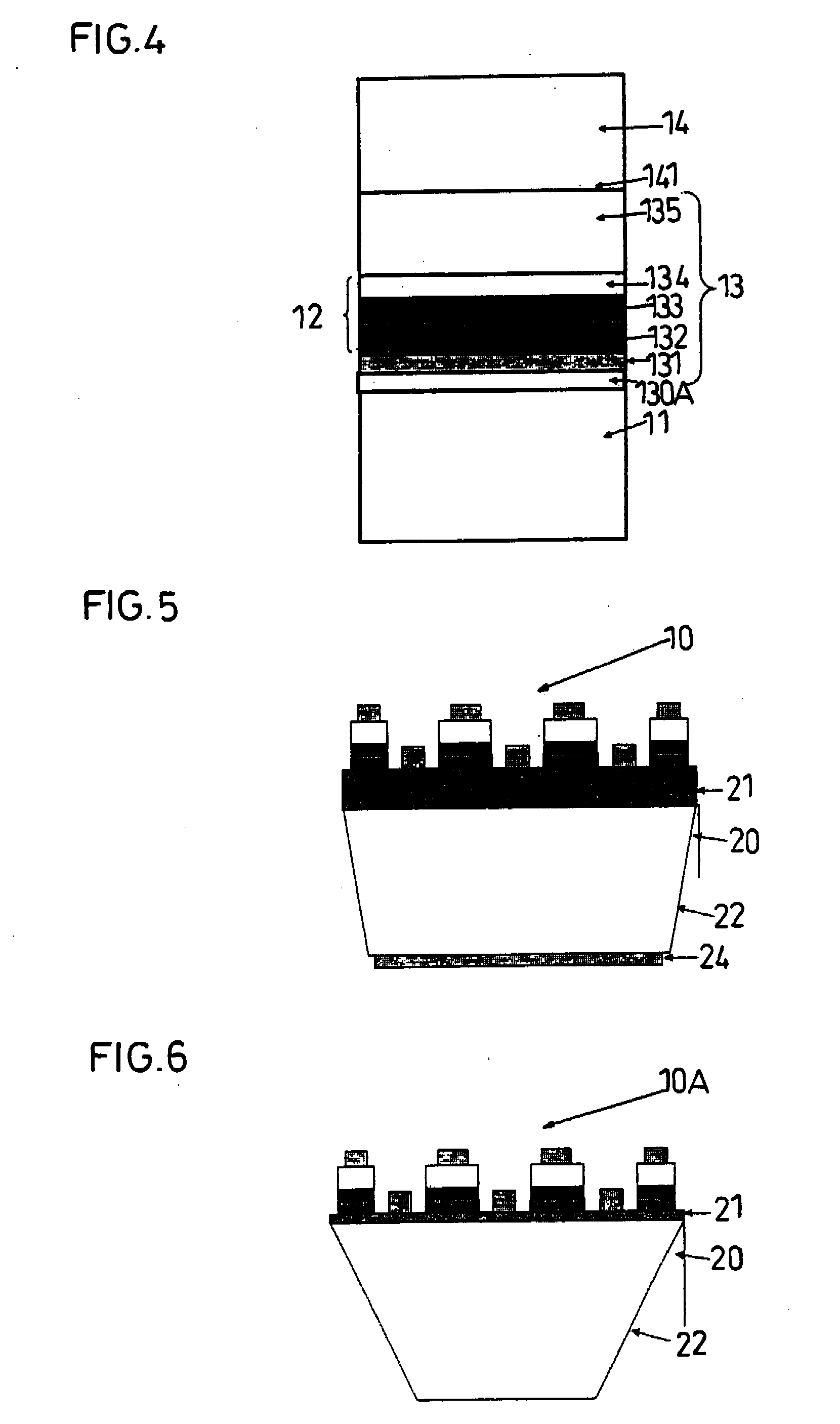Light-emitting diode and method for fabrication thereof
a technology of light-emitting diodes and transparent substrates, which is applied in the direction of semiconductor/solid-state device manufacturing, electrical apparatus, semiconductor devices, etc., can solve the problems of not studying the exoergic property, lowering the light-emitting efficiency and degrading brightness, and failing to optimize the electrode disposition. , to achieve the effect of high exoergic property, high degree of electric current, and high brightness
- Summary
- Abstract
- Description
- Claims
- Application Information
AI Technical Summary
Benefits of technology
Problems solved by technology
Method used
Image
Examples
example 1
[0124]FIG. 1 and FIG. 2 schematically illustrate a semiconductor light-emitting diode 10 fabricated in Example 1. FIG. 1 is a plan view and FIG. 2 is a cross section taken across FIG. 1 along line II-II. FIG. 3 is a schematic cross section of the layered structure of a semiconductor epitaxial stacked structure to be used in the semiconductor light-emitting diode 10 of Example 1 and FIG. 4 is a schematic cross section illustrating a structure resulting from joining a substrate 14 to the semiconductor epitaxial stacked structure of FIG. 3.
[0125]The semiconductor light-emitting diode 10 fabricated in Example 1 was a red color Light-Emitting Diode (LED) possessing an AlGaInP light-emitting part 12. It was fabricated by joining an epitaxial stacked structure formed on a semiconductor substrate 11 made of GaAs and the GaP substrate 14.
[0126]The light-emitting diode 10 was fabricated by using an epitaxial wafer that was furnished with an epitaxial growth layer 13 composed of semiconductor ...
example 2
[0141]A semiconductor light-emitting diode 10 of Example 2 possessing the same structure as in Example 1 while having a metal layer 24 of an AuSn eutectic (melting point 283° C.) formed on the back surface as illustrated in FIG. 5 was fabricated.
[0142]A semiconductor Light-Emitting Diode lamp (LED lamp) 1 possessing the structure illustrated schematically in FIG. 8 and FIG. 9 was assembled by following the same procedure as in the use of the semiconductor light-emitting diode 10 of Example 1 while using the semiconductor light-emitting diode 10 of Example 2 as an LED chip 42 and using AuSn in the place of the Ag paste.
[0143]The semiconductor light-emitting diode lamp1 that was manufactured by using the semiconductor light-emitting diode 10 of Example 2 was evaluated in the same manner as in Example 1. The results are shown in Table 1 below. The forward voltage (Vf) during the flow of an electric current of 500 mA in the forward direction was 2.4 V. The intensity of light emission wa...
example 3
[0148]As another concrete example of the second embodiment, the light-emitting diode according to Example 3 will be described below by reference to the accompanying drawings.
[0149]FIG. 10 and FIG. 11 illustrate the semiconductor light-emitting diode 10 of Example 3; FIG. 10 is a plan view and FIG. 11 is a cross section taken across FIG. 10 along line XI-XI. FIG. 12 is a schematic cross section of the layered structure of the semiconductor epitaxial stacked structure used in the light-emitting diode 10 of Example 3 and FIG. 13 is a schematic cross section illustrating a structure resulting from joining the GaP substrate 14 to the semiconductor epitaxial stacked structure of FIG. 12.
[0150]The semiconductor light-emitting diode 10 of Example 3 was a red color Light-Emitting Diode (LED) possessing an AlGaInP light-emitting part 12 and was fabricated by joining an epitaxial stacked structure installed on a semiconductor substrate 11 made of GaAs to the GaP substrate 14.
[0151]The light-em...
PUM
 Login to View More
Login to View More Abstract
Description
Claims
Application Information
 Login to View More
Login to View More - R&D
- Intellectual Property
- Life Sciences
- Materials
- Tech Scout
- Unparalleled Data Quality
- Higher Quality Content
- 60% Fewer Hallucinations
Browse by: Latest US Patents, China's latest patents, Technical Efficacy Thesaurus, Application Domain, Technology Topic, Popular Technical Reports.
© 2025 PatSnap. All rights reserved.Legal|Privacy policy|Modern Slavery Act Transparency Statement|Sitemap|About US| Contact US: help@patsnap.com



